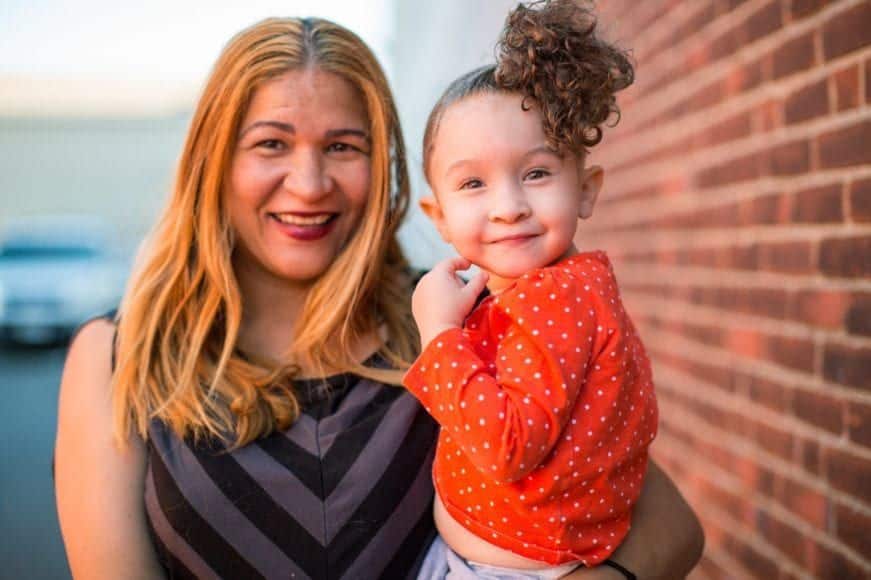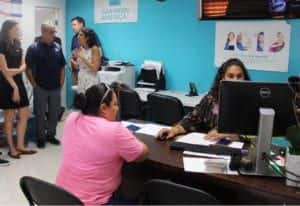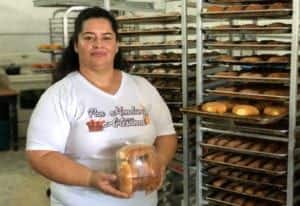After five consecutive years of declines in the national poverty rate, the United States is expected to experience a spike of approximately 6.5% (from 12.4% to 18.9%) in 2020. This means an increase of over 21 million individuals living in poverty, resulting in the highest poverty level in the United States since 1967. Low rates of financial inclusion make the climb out of poverty extremely difficult.
The Impact of COVID-19 on Grameen America’s Members
By utilizing their unique, proven group-lending model, Grameen America can very effectively reach underserved communities and invest in women who have no credit score, no formal business plans and no collateral. With the hard blow the pandemic has delivered to our economy, Grameen America’s mission and work have become more important and urgent than ever. This microfinance institution (MFI) targets the most disadvantaged communities with the greatest barriers to economic independence. They help women entrepreneurs build their small businesses by closing the large capital and capacity gaps which exist in our country.
As mentioned in a blog published in August, Grameen America has responded nimbly to the big new challenges of 2020. The current economic crisis in the United States caused by COVID-19 disproportionately affects their member profile: low-income, primarily minority women whose economic survival depends on their small businesses.
As a national organization, Grameen America initially saw their members in the Northeast region (New York, New Jersey and Boston) most affected by the health implication of the coronavirus. These members are now in a rebuilding phase, working to reimagine and reopen their businesses following statewide lockdown mandates. Their members in California and the Southwest are now the ones who are in a more challenging situation, but as an organization, Grameen America is quite cognizant of this and is poised to support all the women in their program across the country.
With requirements for nonessential businesses to keep their workforce home to prevent the spread of COVID-19, a recent national survey of Grameen America’s microloan recipients across 15 U.S. cities found that 70% of Grameen America’s members’ businesses have been affected by restrictions to curb the spread of COVID-19, and are concerned about meeting financial obligations including rent and other essential bills. Also, 27% of their members reported that someone close to them has been personally impacted by the virus.
Underpinned by their mission, the Grameen lending methodology, and quick adaptation to 100% virtual operations in March 2020, Grameen America is firmly positioned to support the businesses they serve by continuing to provide microloans, training and support. Between April 1 and August 30, GAI provided over $129 million in funding to over 30,000 women.
Forging Ahead through the Pandemic
12 years after its founding, Grameen America has become the fastest growing MFI in the United States – in spite of the coronavirus. They have invested more than $1.6 billion to support over 132,000 women and their businesses across the United States. Their branch staff continues to engage nearly 45,000 women entrepreneurs weekly while providing business-enhancing capital through safe, virtual methods. As a result, Grameen America is uniquely positioned to understand and support underserved communities which are truly part of the bedrock of our national economy. Typical enterprises of Grameen America’s women member-borrowers include food carts, restaurants and hair salons—all of which have been deeply affected by measures to limit the spread of COVID-19.
- Grameen America’s branch in Miami, Florida. Our team visited in 2019.
- Microcredit client Yareli runs PAN HONDUREÑO ARTESANAL Bakery in Miami.
- Regina is a microcredit client in Harlem who bakes cookies under her personal brand.
- Our team met microcredit clients of Grameen America in Harlem in 2018.
Group Lending and Social Distancing
Grameen group-lending methodology involves frequent, close group interaction as the member-borrowers meet weekly with their Center Manager, often in close quarters such as a member’s home or small business location. Because those conditions present elevated risks due to COVID-19, Grameen America has adjusted their model to operate remotely and continue serving their members with the following practices:
- Virtual Center Meetings: All 2,400+ weekly center meetings are now being held through virtual teleconferences, ensuring continuity of support and encouragement to their members during this difficult time.
- Digital Loan Repayments: As members are no longer able to make their weekly repayments during an in-person center meeting, all current members have adapted to both new and existing digital repayment channels.
- Digital Loan Disbursements: All new loans are made to members directly via one of two digital methods, allowing them immediate access to capital for their businesses during this time of greater need. Members can receive their loans through ACH transfer or disbursement cards that act as debit cards.
Economic Relief
Further, last March, Grameen America launched the Grameen America Economic Relief & Recovery Package to continue providing essential capital and support. Features of this Package include:
- All current and new Grameen America loans were interest-free April 1 through June 30, 2020.
- During that period, members who were having difficulty repaying their loans could choose to extend their loan and cut their weekly payments in half.
- GAI also covered members’ transaction costs to digital repayment vendors to support safe, virtual operations.
- GAI also offered repayment relief for those who are unable to make their weekly repayments due to health or other extenuating circumstances.
- Starting July 1, 2020, Grameen America members have access to emergency business capital in the form of a new product, the Grameen America Recovery Loan. Designed for members who have experienced a decrease in business operations due to the COVID-19 pandemic and its impact, this loan provides members with a cash infusion during the gradual opening of the economy.
CDFIs in a New Global Economy
The global economy is going through a significant turning point. There is a growing movement demanding the financial system work better for those who have previously been on the periphery, and Community Development Financial Institutions (CDFIs) are well-positioned to support these historically underserved communities.
As a unique CDFI, Grameen America’s peer-support model means they speak with their members each week and discuss what’s working in their businesses, what challenges they are currently facing, and how they can gain support and advice from their peers. This practice also gives Grameen America a constant feedback loop from which they can learn, adapt, and improve; and in conjunction with strategic partnerships such as that with Whole Planet Foundation, they can increase their scale rapidly, allowing them to continue building their capacity, updating their technologies and developing new programs to benefit their member-borrowers.
| Metric | National #s |
| # Branches | 22 |
| # Cities | 14 |
| Women Served | 132,469 |
| Cumulative Disbursements | 1.6 Billion |
| # Loans Disbursed | 584,740 |
| Avg. Loan Size (Since Inception) | $2,800 |
| Repayment Rate | > 98% |
Grameen America Key Performance Indicators (KPI) as of August 31, 2020
The Next 10 Years
Grameen America’s goal for the next decade is to produce a measurable impact on the lives of women affected by poverty in the United States. They plan to achieve this with the following:
New Products
To help members embark on the next phase of business growth, Grameen America is rolling out a Business Expansion Loan. Starting at $10,000, this new product assists their more advanced members in scaling their microenterprises into more formalized small businesses.
New Services
Grameen America’s weekly center meetings with borrower groups provide a unique opportunity to consistently engage members with networking and education. Their Member Development Program delivers training on personal finance, business, and other topics. Their joint health initiative, called Grameen Promotoras, in collaboration with Grameen PrimaCare, offers information on a range of health and wellness issues, referrals to local health providers, and system navigation.
New Locations
Over the next decade, Grameen America aims to scale their operations to 40 locations, reaching over 400,000 women with over $12 Billion in microloans. In the first few years, their planned expansion to Chicago, Dallas, and San Antonio will provide much needed financial access to underserved communities. During these 10 years of expansion, new branches will be opened in states including California, Connecticut, New Jersey, and Texas. Also, to widen the radius they already serve in large cities with great need, they will also initiate a “hub and spoke” approach to expand their reach and deepen the impact on communities they already serve.
COVID-19 has dealt quite a blow to all of us worldwide, in various ways and varying levels of intensity. Those most heavily impacted are often those who already faced health, economic, personal, and other hardships well before early 2020. For many of them, who most certainly include the businesswomen Grameen America aims to serve, the pandemic has amplified the challenges faced by these fundamental members of our society. No other time has more clearly shown us than current times, how a modicum of carefully and intentionally provided support can help borrowers stabilize and grow their small enterprise, thus improving Grameen America’s members’ livelihood, that of their families, and the well-being of society at large.
Special thanks to Mindee Barham, Jill Monum, and Petra Nelson of Grameen America, Inc., for much of the information shared in this blog, for their ongoing collaboration with all of us at Whole Planet Foundation, and for the very important work they do for businesswomen, their families, and their communities across the United States.





